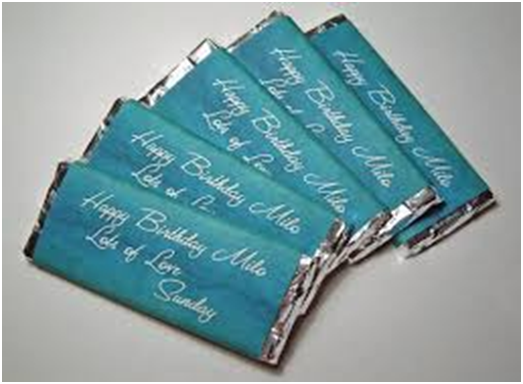The candy bar wrapper has a long and interesting history, evolving as technology and printing techniques have improved over the years.
From the earliest days of printed chocolate bar wrappers to the colorful, eye-catching wrappers of today, candy bar wrappers have come a long way. In this blog post, we’ll explore the history of candy bar wrappers and how they have evolved to keep up with changing times.
We’ll start by looking at the earliest days of candy bars and how the wrappers were designed, before exploring more recent innovations in wrapper design and printing.
We’ll also look at the reasons behind the evolution of candy bar wrappers, from improvements in production efficiencies to changes in consumer preferences. Finally, we’ll consider the future of candy bar wrappers and what new developments we can expect to see in years to come.
Whether you’re a fan of candy bars or simply want to learn more about their history, this blog post will provide
Origin of candy bar wrappers:
The origin of candy bar wrappers dates back to the late 19th century, when chocolate first became widely available.
At first, these chocolate bars were wrapped in plain paper, wax paper, or even tissue paper. This was an effective way to protect the candy from dirt and moisture, but it was not particularly attractive.
As chocolate production increased, so did demand for creative, eye-catching packaging. By the early 20th century, manufacturers were printing their names and logos on their candy bar wrappers in an effort to make them stand out on store shelves.
Over the decades, candy bar wrappers have evolved from simple paper wrappers to colorful, foil-lined packages decorated with artwork, logos, and nutritional facts.
Early design elements:
The early design elements of candy bar wrappers were often quite simplistic. The wrappers were typically printed on a single piece of paper, with a logo or illustration at the top, and a simple typeface listing the ingredients.
The wrappers often featured bright colors and simple designs, typically including geometric shapes and lines.
At this time, the wrappers were often larger than the candy bars, as manufacturers had yet to perfect the art of folding the wrappers to fit the candy bars. Many of these early wrappers featured a “Nutrition Facts” panel, which was a relatively new concept at the time.
Changes in materials used:
Materials used to wrap candy bars have been constantly evolving since their introduction in the late 1800s. Initially, wax paper was the only wrapping material available.
These wrappers were easy to produce but had many drawbacks, such as not being waterproof or able to keep out bacteria.
This prompted the introduction of foil wrappers in the early 1900s. Foil wrappers improved the shelf life of candy bars and allowed for a much more attractive packaging option.
More recently, the use of cellophane wrappers has become popular for candy bars. Cellophane wrappers allow for a large degree of customization and create a much more eye-catching package.
Modern innovations:
The candy bar industry has made remarkable advances in the past few decades, with modern innovations in the production of wrappers.
Many modern wrappers are now able to be printed and packaged more quickly and efficiently than ever before. The wrappers are often made from recyclable materials and can be printed with a variety of colors, textures, and designs.
Additionally, the wrappers are often equipped with tamper-proof seals, making them a safe and reliable packaging option. The advances in candy bar wrappers have also allowed for more intricate designs, adding to the overall aesthetic of the product.
Impact of candy bar wrappers on modern society:
One of the most notable impacts of candy bar wrappers on modern society is their role in creating a connection between the brand and its customers. As the design of candy bar wrappers has evolved over the years, they have become more than just a packaging material.
They have become a way to communicate a brand’s message and create a memorable customer experience. Not only do they serve to inform customers about the product, but they also give a brand an opportunity to stand out from the competition and make it easier for customers to choose their product.
Additionally, candy bar wrappers have become collector’s items, with many people collecting them from various brands and years. This is a testament to the long-lasting effect of the impact of candy bar wrappers on modern society.








